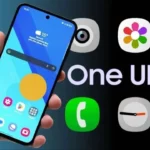Modern technology has brought countless conveniences, but it’s also introduced some unintended challenges—like accidentally calling emergency services. For Pixel Watch users, this scenario may soon become a thing of the past thanks to a thoughtful update from Google. The company has rolled out a new feature designed to minimize accidental activations of the Emergency SOS function, ensuring that help is summoned only when truly needed.
The Emergency SOS feature on the Pixel Watch has long been a valuable tool for safety-conscious users. With just five presses of the watch crown, wearers could quickly connect with emergency services or notify their designated contacts of their location. While this functionality has undoubtedly saved lives in critical situations, it has occasionally led to embarrassing or inconvenient mishaps. Stories abound of accidental triggers sending distress signals—or even private photos and videos—to emergency contacts. Recognizing these concerns, Google has taken steps to refine the system without compromising its core purpose: keeping users safe.
A Thoughtful Solution to an Unwanted Problem
The latest update introduces an additional step to the Emergency SOS process. Instead of immediately dialing 911 after five rapid presses of the crown, the Pixel Watch now prompts users to hold their finger on the screen for three seconds before initiating the call. This brief pause gives individuals time to reconsider if they truly need emergency assistance, reducing the likelihood of unintentional calls.
While the change aims to prevent accidents, it does come with a trade-off. The extra step adds precious seconds to the process, which could potentially delay access to help during life-threatening situations. To address this concern, Google allows users to revert to the original setup, where pressing the crown five times automatically places the call. This flexibility ensures that those who prioritize speed over caution can still tailor the feature to their needs.

Pixel Watch owners will receive a notification about the update after installing version 2025.01.23.x of Wear OS. The rollout began at the end of January, and by now, most users should have access to the improved functionality. It’s worth noting that this adjustment isn’t unique to Google; other tech companies, including Apple, have implemented similar safeguards to balance usability and safety.
Why Features Like This Matter
Emergency SOS systems are far more than convenient tools—they’re lifelines in moments of crisis. Consider the story of three students in Utah who found themselves stranded in a remote canyon in April 2023. Their iPhones’ Emergency SOS feature allowed them to contact authorities discreetly, ultimately saving their lives. Such examples underscore the importance of having reliable, easy-to-use safety mechanisms built into our devices.
However, the flip side of accessibility is the potential for misuse—or, more commonly, accidental activation. Unintentional 911 calls aren’t just annoying; they tie up resources that could otherwise be directed toward genuine emergencies. According to reports, thousands of such calls occur annually, often due to mistaken button presses or misunderstandings about how certain features work.
Google’s decision to implement a confirmation step reflects a growing awareness of this issue. By adding a moment of deliberation, the company hopes to strike a balance between preventing false alarms and maintaining the utility of the feature. For many users, this small tweak could mean the difference between peace of mind and an awkward conversation with local emergency dispatchers.
What Happens If You Still Call 911 by Mistake?
Even with the new safeguard in place, accidents can happen. Should you inadvertently trigger an emergency call, experts advise against hanging up. Doing so might prompt operators to assume the worst and send help your way regardless, leading to unnecessary deployment of resources. Instead, staying on the line and calmly explaining the situation is the best course of action.
Fortunately, emergency responders understand that accidental dials are relatively common. There’s no penalty for making an honest mistake—as long as it doesn’t become a habit. Repeated frivolous calls to 911, however, can result in legal consequences, so it’s essential to use the feature responsibly.
Balancing Innovation and Responsibility
Google’s update highlights the delicate dance between innovation and responsibility in the tech industry. On one hand, companies strive to create products that enhance user experience and provide real-world benefits. On the other, they must anticipate and mitigate potential downsides, whether through design improvements or educational campaigns.
In this case, the revised Emergency SOS feature demonstrates Google’s commitment to refining its offerings based on user feedback. By addressing a known pain point while preserving the option for faster response times, the company shows that it values both safety and convenience. Moreover, the update serves as a reminder of the broader impact technology can have on public safety infrastructure.
Looking Ahead
As wearable devices continue to evolve, features like Emergency SOS will likely become even more sophisticated. Future iterations might incorporate advanced sensors, AI-driven context awareness, or seamless integration with smart home systems to further streamline emergency responses. Until then, updates like this one represent incremental yet meaningful progress toward a safer, smarter world.
For Pixel Watch users, the latest change offers reassurance that their device remains a dependable ally in times of need. Whether hiking in remote areas, navigating urban environments, or simply going about daily routines, knowing that help is readily available—and less prone to accidental summons—is invaluable. At the same time, the ability to customize settings ensures that individual preferences and priorities are respected.
Ultimately, Google’s approach exemplifies how thoughtful engineering can enhance both functionality and user confidence. As technology continues to blur the lines between convenience and necessity, solutions like this remind us of its immense potential to improve lives—one carefully considered update at a time.















Add Comment